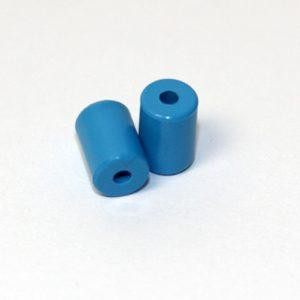Temperature readings are popular data recording applications across a wide range of industries, including medical monitoring, cold chain integrity, machine monitoring, and many more. There are four primary types of temperature sensors used with data loggers, and choosing the proper one can be a difficult task. CAS Data Loggers’ Applications Specialists have put up this fast guide to outline each sensor type and assist you in determining which one is most suited for your application.
Thermocouples are the most common sort of temperature sensor, and they’re extensively utilized in situations where affordability, simplicity, and a large operating range are more important than great accuracy. Semiconductor devices are also inexpensive and give a temperature-proportional output voltage or current with a restricted operating range and precision comparable to thermocouples. RTDs and thermistors produce a temperature-related change in resistance, and while they are more accurate than thermocouples, RTDs have a smaller operational range.
Thermocouples are the most commonly used and also one of the most affordable sensors. A thermocouple is just two dissimilar metal wires of highly specified alloys soldered together at a single spot. A thermocouple produces a temperature-related output voltage (usually at the millivolt level). The voltage is measured by the data logger, which is then converted to temperature using a calibration equation. A cold junction reference is included in the data logger to adjust for any offset voltage that occurs at the connections between the thermocouple wires and the data logger, as is the case with all data Taker Series 3 dataloggers.
Multiple voltage measurements of the thermocouple and reference junction, as well as scaling the voltage to temperature and adjusting for the reference temperature, are all part of a thermocouple temperature measurement. Typical thermocouple accuracies are on the range of 1-2°F due to changes in the composition of the thermocouple wire, while special composition wires with decreased errors are also available. When you’re looking for a low-cost, easy-to-use equipment, consider thermocouples.
Because thermocouple tests employ relatively low voltages, their high noise is sometimes a challenge, especially in industrial settings or where long cable runs are necessary. There are two common approaches of minimizing measurement noise:
- Use shielded thermocouple wire – Thermocouple wire has an extra layer of electrical shielding around the conductors to lessen the impact of surrounding equipment’s electrical interference. This shield should only be connected to a good electrical or earth ground at one end for maximum performance. Use a temperature transmitter – Several Custom Thermistors Manufacturers in USA sell small temperature transmitters that accept a normal thermocouple input and output a 4-20 mA signal, which may then be measured with the datalogger. If you have a long cable run between the measurement place and the data logger, these are quite beneficial.
The mV level thermocouple output is substantially more vulnerable to noise than the 4-20 mA current signal. Furthermore, utilising a transmitter is frequently not much more expensive than using shielded thermocouple wire due to the lower cost of common cabling for 4-20 mA signals.
- Semiconductor sensors use a solid state device (such as a diode or voltage reference) with a well-known voltage vs temperature characteristic, as well as signal processing circuitry, to provide a temperature-proportional voltage or current output. The Analog Devices AD592 transducer, for example, has a 1A/K output current and a 248 A output current at -25°C. To scale the signal to temperature, these devices merely require a simple voltage or current measurement and a linear computation. When cost is a concern and a specified temperature range is required, semiconductors should be considered.
- A resistance-to-temperature (RTT) sensor is a device whose resistance increases linearly with temperature. A fine platinum wire wound around a cylinder is the most common RTD, but nickel and copper wire are also employed in some situations. The slope of the resistance vs. temperature curve is highly specific, and the RTD is built to have a specified resistance at 0°C, with 100 being the most common figure. To determine temperature, the data recorder will send a known current through the RTD and measure the resulting voltage, from which the resistance may be calculated. Finally, the data logger can calculate the temperature using the slope of the resistance vs. temperature curve and the 0°C resistance.
RTDs are usually more accurate and reliable than thermocouples, but they have a smaller operating range. When you need high-precision measurements for a restricted temperature window, RTD sensors are a good option.
- Thermistors are similar to RTDs in that their resistance changes with temperature, but their resistance changes in a non-linear manner. Because of this property, thermistors may provide extremely precise temperature readings, down to 0.01°C, but only over a narrow temperature range (usually -40°C to 150°C). Thermistors, like RTDs, are designed to have a specified resistance at 0°C—2252 is a common value—and each family of thermistors has a unique resistance vs temperature characteristic that the data logger must support. When you need to record with extreme precision but don’t want to spend a lot of money on sensors, thermistors are a good option.
Portable, power over Ethernet, and wireless types of temperature dataloggers that can read the signals from these sensors are examples. You can choose a data logger to match your particular demands, whether you need a basic single-channel unit to log temperature or a multi-channel system to log several temperature inputs and other metrics at the same time.


























